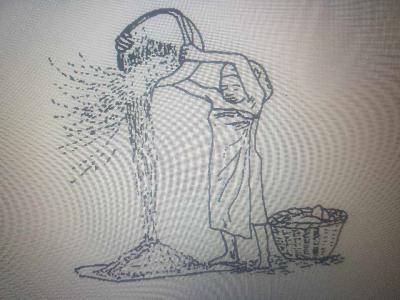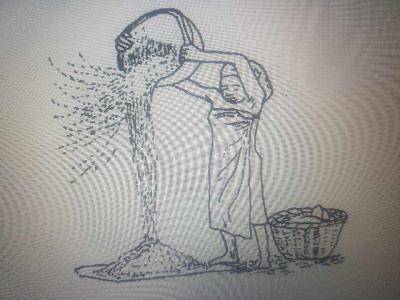
Agricultural Science Questions and Answers
A comprehensive list of Agricultural science questions with answers to help you prepare for JAMB, WAEC, NECO, Post UTME exams.

A comprehensive list of Agricultural science questions with answers to help you prepare for JAMB, WAEC, NECO, Post UTME exams.
The diagram above illustrates a farm operation. Study it and answer the question

Examples of crops which require the illustrated farm operation are
Cowpea, millet and okro
Maize, pepper and tomato
Rice, groundnut and millet
Pepper, rice and cowpea
Correct answer is C
Examples of crops which require the illustrated farm operation are rice, groundnut and millet.
The diagram above illustrates a farm operation. Study it and answer the question

The illustrated farm operation is known as
Winnowing
Milling
Shelling
Threshing
Correct answer is A
Winnowing is the process of separating the lighter chaff or husk from the heavier grains or seeds after threshing. It is usually done by tossing the mixture of grains and chaff into the air with a winnowing basket or using a winnowing machine. The wind carries away the lighter chaff, allowing the heavier grains to fall back to the ground or into a container.
A beneficial effect of bush burning is that it
Replenishes oxygen in the atmosphere
Increases the organic matter of soil
Encourages the regeneration of grasses
Increases the population of soil microorganisms
Correct answer is C
When a controlled fire burns through a grassland, it can remove accumulated dead plant material and woody debris, known as thatch. Thatch can hinder the growth of new grass shoots and prevent sunlight and rainwater from reaching the soil surface. By removing the thatch through controlled burning, the fire creates a favorable environment for grass regeneration.
125 kg
50 kg
250 kg
1,250 kg
Correct answer is A
1 hectare = 10,000 square meters
Area of the farmland = 100 m x 500 m = 50,000 square meters
Now, we can convert the area to hectares:
Area in hectares = 50,000 square meters / 10,000 square meters/hectare = 5 hectares
Next, we can calculate the quantity of cowpea seeds required using the given seed rate:
Seed rate = 25 kg/hectare
Quantity of cowpea seeds required = Seed rate x Area
Quantity of cowpea seeds required = 25 kg/hectare x 5 hectares
Quantity of cowpea seeds required = 125 kg
Therefore, the quantity of cowpea seeds required to cultivate the farmland is 125 kg. The correct answer is "125 kg."
Maceration is carried out in the processing of
Paddy rice
Oil palm
Cotton
Cocoa
Correct answer is B
Maceration is a process used in the processing of oil palm. It involves the softening or breaking down of the oil palm fruits by soaking them in water or another liquid. This process helps to separate the oil from the fruit and makes it easier to extract the oil.